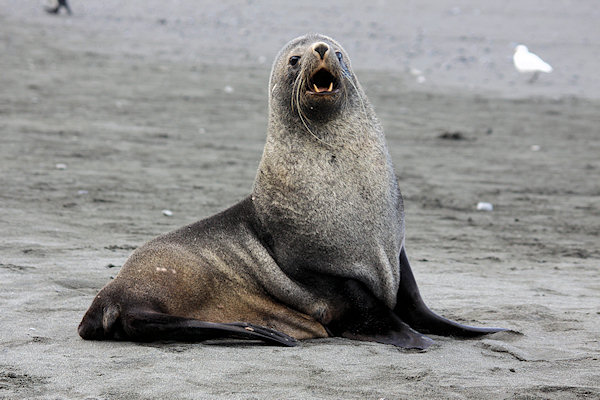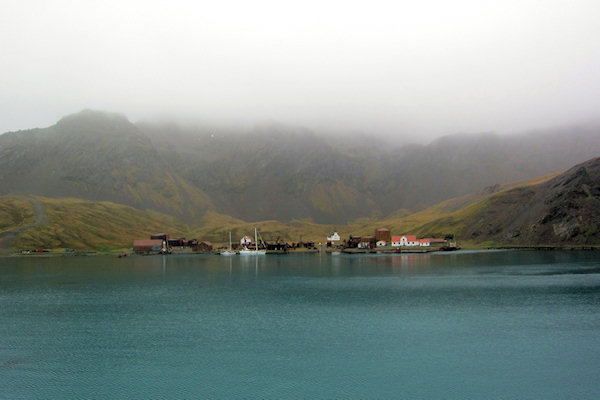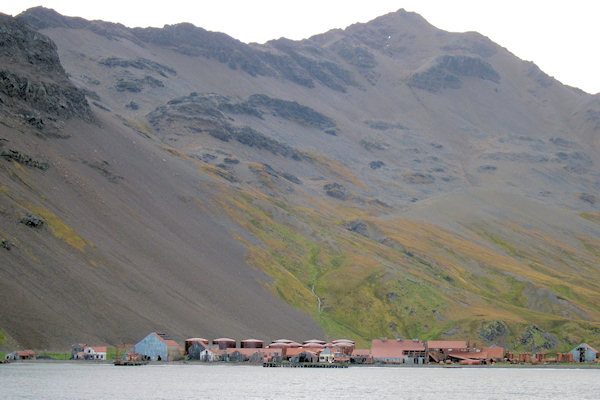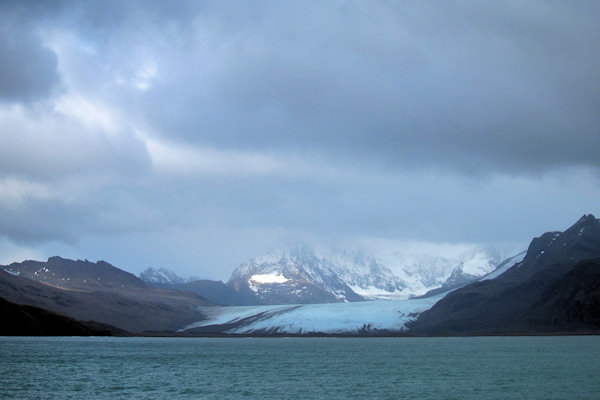South Georgia
Things to DO
South Georgia
Cape Disappointment
 |
|||||
After 3 days at sea we finally approached South Georgia from southwest. There was a quite hard wind from
northwest and a big swell as we turned around the south-eastern corner of the island. The spectacular
mountains on South Georgia were visible as we approached and the tops were covered with snow. This place is
know as Cape Disappointment.
It was first charted and so named in 1775 by a British expedition under James Cook, who upon reaching
this position was greatly disappointed in realizing that South Georgia was an island rather than a
continent.
We to, where disappointed, after completely missing the Antarctic Peninsula, South Georgia was our latest
hope for seeing pinguïns etc.
Our expedition-leader told us, that when we will round the island, the weather sould improve, so there is hope.
Cooper Bay
 |
|||||
As we rounded Cooper Island the sea suddenly lay calm and the sun was shining.
The day was just perfect for a landing and zodiac cruise in Cooper Bay!
We had lots of time and spent some hours observing a small colony of King Penguins with chicks,
Gentoo Penguins, Snowy Sheathbill, Giant-petrels, Fur Seals and Elephant
Seals, including some males.
Then we walked to the other beach for a closer look at the Macaroni Penguins and after that we went
cruising with the zodiacs to nearby Cooper Island, where there was a large colony of Chinstrap
Penguins.
The South George Pipit is the only songbird in Antarctica. This sparrow-sized bird, lays op to four
eggs in a nest of dried grass among the tussock grass. It has been exterminated from most of South Georgia by
rats and now nests only on offshore islands and along the South Coast.
 |
|||||
In the afternoon, we were visited by Ruth from the South Georgia Heritage Trust, who told us about
the ongoing rat eradication programme for South Georgia.
The arrival of rats and other rodents on South Georgia as stowaways on sealing and whaling ships had a
catastrophic effect on the island’s native bird populations. Rats eat the eggs and chicks of many
ground-nesting bird species. As a result, the main island has been all but abandoned by the storm petrels,
prions, diving petrels and blue petrels that once nested there.
As a result of global warming, South Georgia’s glaciers are retreating rapidly – two glacial barriers have
been lost in the last few years alone. Without these barriers, the few remaining rodent-free areas will
quickly be overrun and South Georgia’s remaining bird populations will suffer the consequences.
The first phase of the rat eradication project has just been successfully completed in the sector around
Grytviken, where bait has systematically been spread by two helicopters that have been purchased for the
project. The remaining rat-infested parts of the island will be baited as quickly as possible, sector by
sector, in the years to come.
Various logistical support has been provided by the South Georgia authorities, but the project relies heavily
on private donations.
Grytviken
 |
|||||
This morning we found ourselves at anchor off Grytviken and King Edward Point, in calm but
increasingly rainy weather with low clouds covering the mountain tops.
It's South Georgia's only whaling station that can be visited - after all the hazardous material and
dangerous structures were removed by the South Georgia Government. It operated from 1904 to 1965.
When entering the wonderful South Georgia Museum, be sure to look up. Otherwise, you'll miss - as
many do - the mounted Wandering Albatross soaring overhead.
The museum, opened in 1992, is housed in the former station manager's house, built in 1916 by the Norwegians.
It's filled with fascinating exhibits on South Georgia's history and wildlife. The shop sells an amazing
array of clothing, patches, souvenirs, postcards, slid sets and books.
the restored Whaler's church, consecrated on Christmas Day 1913, is a typical Norwegian Church.
Indeed, it was originally erected in Strommen before being dismantled and shipped here.
Inside are memorials to Grytviken's founder Carl Anton Larsen and to Shackleton, whose funaral
was held here.
Strömness
 |
|||||
In the afternoon we managed to land at Strömness, another of the former Norwegian stations.
Stromness began as an anchorage for the floating factory ship Fridtjof Nansen II in 1907. A shore
station began operating in 1913, but in 1931 Stromness was converted to a ship repair yard until it closed in
1961. The whale-catcher's propellers on the beach are reminders of Stromness'latter role.
On the beach we where met by rain and wind (that luckily subsided), and by a multitude of Fur Seal pups
playing and barking everywhere on the beach and in the valley.
Small groups of determined Gentoo Penguins waded out of the sea and trotted up a slushy path towards
their breeding grounds a couple hundred metres inland.
In 1925 seven Reindeer were released at Husvik. They were brought from Norway for sport and meat.
The decendants now spread around Stromness Bay. As they have a nagative effect on the vegetation, they will
be shot in the next years.
At night some Black-bellied Storm Petrel's were atracted by the ligt and landed on the ship. They were
released at day-light.
Fortuna Bay
 |
|||||
A strong northerly and heavy swell precluded the landings on Prion Island and Salisbury Plain which
were scheduled for today.
So, we headed South towards Fortuna Bay, hoping for shelter and thus calmer conditions. That might
have allowed a landing close to the medium-sized rookery of King Penguins.
With the wind up to 35 knots and a very big swell coming from our beam the voyage south was somewhat
uncomfortable.
We eventually arrived off Fortuna Bay and, with Fur Seals bobbing up and down in the turbulent sea. On
arrival at the usual anchoring spot in sight of the spectacular glacier at the head of the bay, a gleam
of sun in an otherwise overcast sky produced a rainbow auguring well perhaps for a landing.
That was not to be.
Due to hudge crashing breakers on the shore-line, it was decided to cruise slowly up and down to see if, as
forecast, the wind shifted to the west which would give a better chance during the afternoon.
Luck was not with us.